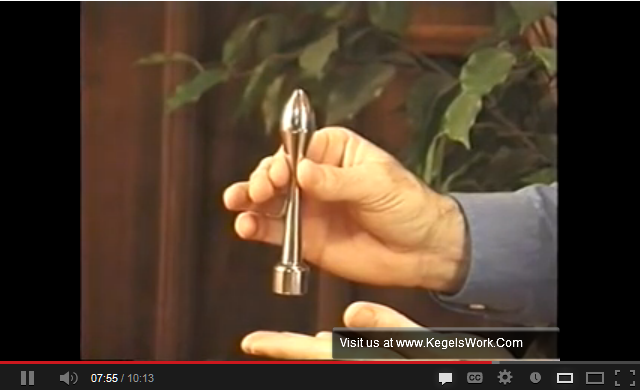Labels
Powered by Blogger.
Blog Archive
-
▼
2013
(17)
-
▼
April
(7)
- Cure Erectile Dysfunction Naturally the Kegel exer...
- Studies Find Male Enhancement Penis extenders bett...
- What is the Kegel exercise?-Exercise for better se...
- Do I have a small penis? - Small, Medium, and what...
- The Best 6 Ways to Boost Your Sex Drive
- Penis Health : 6 things that every man should know...
- Does Penis Enlargement Exercise Work?
-
▼
April
(7)
Thursday, April 18, 2013
What is the Kegel exercise?-Exercise for better sex life and a better sex life Stamina
Kegel exercises are exercises you can do to strengthen the pelvic floor muscles - the muscles that support the urethra, bladder, uterus and rectum. The exercises are named Arnold Kegel, a gynecologist who recommended them back in the 1940s to help women with urinary incontinence or urinary incontinence decreased, which can occur after childbirth.
If you are not already doing Kegel exercises, start now. Strengthening the pelvic floor muscles can help prevent or treat stress urinary incontinence, a problem that affects up to 70 percent of women during or after pregnancy. Kegel exercises can also help reduce the risk of anal incontinence.
Because of Kegel exercises improve the circulation in the rectal and vaginal area can help keep hemorrhoids at bay and possibly speed healing after an episiotomy or tearing during childbirth. Finally, while doing the Kegel exercises regularly after giving birth not only helps maintain bladder control, but also improves muscle tone of the vagina, making sex more enjoyable.
How do I do Kegel exercises?
Start with the bladder empty. Imagine that you are trying to stop passing gas and trying to stop the flow of urine while. The feeling is "squeeze and lift" - and the development of closure steps front and rear.If you're not sure you have a way to check this is by inserting a clean finger into the vagina before a Kegel. If you feel pressure around your finger, you're on the right track. Or try a kegel during sex and ask your partner if you can hear. If you do it correctly, you will be able to feel that "embrace" his penis.
Make sure you are pushing and lifting without pulling in your stomach, squeezing the legs together, squeezing the buttocks or breath. In other words, only the pelvic floor muscles should be working.
Although you may have trouble isolating these muscles at first, it gets easier with practice. It may be helpful to place a hand on her belly while doing Kegel exercises to make sure it remains relaxed.
If you have not been doing Kegel exercises, start holding each contraction for a few seconds before letting it go and relax for a few seconds after each. As your muscles get stronger, you need to work up to holding each Kegel for ten seconds, then relax for ten seconds after each. If you are suffering from urinary incontinence, Kegel while trying to maintain a sneezing, coughing, or lifting something. It may help to maintain flight.
How often should I do Kegel exercise?
Start Kegel exercises a few at a time throughout the day. As the muscles begin to feel stronger, gradually increase both the number of contractions you do each day and how long each contraction remains up to ten seconds. Is that in groups of ten and try to work up to three or four games to three times a day.Do Kegel exercises part of your daily routine: For example, you could do a series when you wake up in the morning, another while you're watching TV, and then again before going to bed. But it really does not matter where or when you make them - as long as done regularly.
Be patient and keep at it. It may take three to six weeks of Kegel exercises regularly before you notice an improvement in bladder control.
How long should I continue Kegel exercise?
Be sure to do Kegel exercises? We must continue to exercise to maintain strength and prevent incontinence as you age. So do Kegel exercises a lifelong habit.Work to maintain strong pelvic floor muscles can also help protect against pelvic organ prolapse, a common condition among older women. In pelvic organ prolapse, relaxation of the pelvic muscles and ligaments allow the uterus, bladder and rectal tissue to yield and excel in the vagina. This can cause incontinence and other symptoms include pelvic heaviness, lower back pain, and discomfort during sex.
Kegel Exercise for Men and Women: Watch Video Instruction
Labels:Penis enlargement exercise
Subscribe to:
Post Comments
(Atom)


0 comments:
Post a Comment